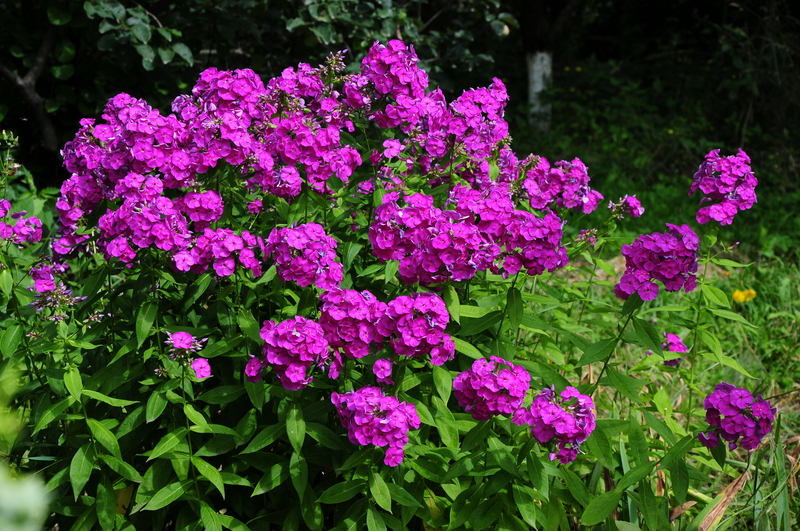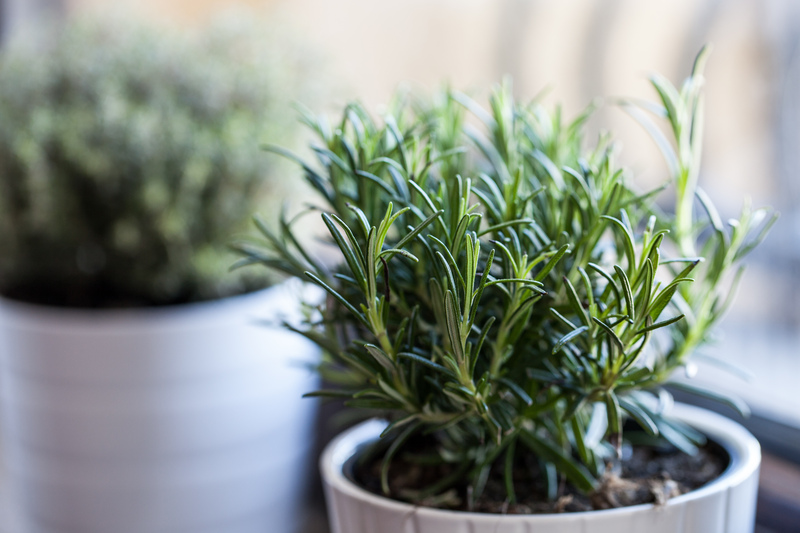Innovative Shapes and Practices in Hedge Trimming
Posted on 30/08/2025
Innovative Shapes and Practices in Hedge Trimming
Hedge trimming has come a long way from simple straight lines and basic maintenance. Today, garden enthusiasts and professional landscapers are pushing the boundaries of design and technique, creating truly remarkable hedges that serve as focal points, privacy screens, and even living works of art. In this comprehensive article, we dive into innovative shapes and modern practices in hedge trimming, exploring sophisticated methods, tools, and creative inspirations for transforming your outdoor space.

The Art and Science of Hedge Trimming Shapes
Beyond their functional benefits, hedges can be sculpted and styled into a variety of imaginative and eye-catching forms. This ability to shape living greenery not only enhances curb appeal but also demonstrates your horticultural skill. Here's a closer look at the most popular and innovative shapes in contemporary hedge trimming:
Traditional Geometric Forms
- Rectangular Hedges: The classic straight-edged shape is popular for boundaries, screens, and providing a formal aesthetic. Modern trimmers use laser guides for extra accuracy, ensuring perfect symmetry.
- Balls and Spheres: These rounded forms are achieved with careful pruning and provide a softer, elegant look that complements formal gardens.
- Pyramids and Cones: Increasingly used in innovative landscaping projects, these shapes give vertical interest and a sense of grandeur to gardens.
- Waves and Curves: Contemporary designs often favor undulating, flowing shapes that mimic natural landscapes, creating a dynamic appearance.
Creative and Artistic Hedge Sculpting
- Topiary Art: Perhaps the ultimate expression of innovative hedge trimming, topiary involves sculpting shrubs into intricate shapes--animals, geometric patterns, spirals, and even abstract forms. The revival of topiary art has led to more experimental and playful approaches in modern gardens.
- Lettering and Logos: Both residential and commercial properties now employ hedge trimming to display names, monograms, or business logos as living signage.
- Themed Gardens: Hedges are artistically shaped to complement the overall design of themed gardens, such as Japanese Zen, Mediterranean, or English cottage styles.
- Architectural Replicas: Advanced gardeners with patience and skill recreate architectural elements like arches, columns, and even mazes using innovative hedge trimming techniques.
The Practice of Cloud Pruning (Niwaki)
Originating in Japan, cloud pruning or Niwaki focuses on forming rounded, cloud-like pom-poms that appear to float atop branches. This technique requires meticulous attention but results in incredibly stunning, organic-looking shapes that inspire tranquility and admiration.
The process of cloud pruning combines traditional understanding with modern tools, and more Western gardeners are now adopting this method for both standalone specimens and continuous hedges. Cloud-pruned hedges are especially effective as focal points in contemporary landscapes.
Modern Hedge Trimming Practices
Innovative hedge shaping wouldn't be possible without advancements in technique and equipment. Landscape professionals and hobbyists alike now have access to an arsenal of tools and information that make even the most ambitious forms achievable. Let's examine the latest practices in contemporary hedge trimming:
Precision Technology in Hedge Trimming
- Laser-guided Trimming: Some advanced hedge trimmers now feature laser guides for perfectly straight cuts and uniform shapes, ideal for creating geometric forms and complex designs.
- Electric and Cordless Trimmers: Lightweight, battery-powered trimmers offer greater maneuverability and control, allowing gardeners to reach intricate areas and maintain delicate shapes.
- Sculpting Frames and Jigs: For beginners or those attempting elaborate shapes, wire frames or templates provide guidance during pruning, helping to achieve professional results.
- Drones and Remote Monitoring: Innovative landscaping companies are starting to use drones for monitoring hedge health, measuring growth, and even planning design layouts for large-scale projects.
Eco-Friendly and Sustainable Practices
Sustainability is an essential consideration in modern gardening. Innovative practices in hedge trimming focus on minimizing waste, protecting wildlife, and promoting the health of plant material.
- Timing of Trimming: Avoiding nesting seasons ensures that trimming won't disrupt local bird populations. Some municipalities provide guidelines to protect wildlife habitats.
- Composting and Mulching: All cuttings are collected and composted, returning nutrients to the soil and closing the sustainability loop.
- Selective Pruning: Rather than aggressive shearing, selective thinning preserves the health and vigor of the plant, encouraging denser and more resilient foliage.
- Eco-conscious Power Tools: The popularity of electric and battery-operated tools has reduced the carbon footprint associated with gas-powered trimmers.
Integration of Smart Technology
- Robotic Hedge Trimmers: Automated hedge trimmers are now available, capable of following pre-set paths and trimming hedges to precise specifications. These smart machines save time and ensure consistency, especially for large landscapes.
- Mobile Apps and Augmented Reality: New apps can help visualize different hedge shapes in your garden before trimming begins. Some augmented reality apps provide interactive guidance, overlaying virtual shapes on your actual hedge through your phone's camera.
Design Principles for Innovative Hedge Shapes
While tools and techniques are vital, thoughtful design is key to creating stunning hedge forms. When planning an innovative hedge trimming project, consider the following design principles:
Balance and Symmetry
Even in the most avant-garde settings, balance is essential for ensuring that the finished look is pleasing and not chaotic. For multiple hedges in proximity, symmetry often adds to a sense of harmony, while asymmetry can be effective for adding dynamic interest.
Scale and Proportion
The size of your hedge shapes should be in proportion with your overall landscape. Overly large, dramatic forms can overwhelm small gardens, while tiny topiaries might get lost in spacious settings.
Rhythm and Repetition
Repeating shapes or patterns along a hedge line creates rhythm in garden design, drawing the eye along the space. This can be accomplished with a sequence of spheres, alternating pyramids, or a wave-like motif.
Focal Points and Frames
Hedges can serve as living picture frames for focal points such as fountains, sculptures, or entryways. Innovative hedge trimming often highlights these features with dramatic arches, spirals, or open windows cut through dense greenery.
Top Hedge Species for Creative Trimming
Not every plant is suited for complex trimming or topiary forms. The ideal hedge plant is dense, evergreen, and boasts small leaves or needles. Here are the most popular species for innovative hedge sculpting:
- Boxwood (Buxus): The quintessential species for topiary and sculpted hedges, prized for dense foliage and slow, controlled growth.
- Yew (Taxus): An exceptionally tough, long-lived choice with fine, dark green needles and tolerance for heavy pruning.
- Privet (Ligustrum): Fast-growing and forgiving, privet is widely used for boundaries, mazes, and intricate shapes.
- Holly (Ilex): Both English and Japanese varieties are ideal for unique shapes, and their glossy leaves add visual interest.
- Hornbeam (Carpinus betulus): With its crisp edges and lush growth, hornbeam is a favorite for complex, linear forms.
For cloud pruning and Niwaki: Japanese holly, pine, and maple trees are popular, thanks to their flexible branches and attractive foliage.
Step-by-Step Guide: How to Trim Innovative Hedge Shapes
Crafting a unique hedge shape may seem daunting, but with the right approach, you can transform your landscape into a showcase of living creativity. Follow these best practices for achieving professional hedge trimming results:
- Planning and Visualization:
- Sketch your desired shape or use a design app for visualization.
- Mark the outline with string, stakes, or frames directly on the hedge.
- Choose the Right Tools:
- For large geometric shapes, electric trimmers and long-handled shears are best.
- Detail work requires hand pruners or precision topiary shears.
- Start Broad, Then Refine:
- Begin by making broad cuts to define the rough outline of the shape.
- Gradually refine, removing smaller amounts each pass to avoid damaging the plant.
- Step Back and Assess:
- Periodically step back to view your work from a distance--this helps ensure balance and symmetry.
- Maintain and Adjust:
- Innovative shapes require regular, light trimming to maintain crisp lines and healthy growth.
- Remove any diseased or dead wood as you work.
- Mind Plant Health:
- Water and fertilize as necessary after major trimming sessions.
- Be cautious not to remove too much foliage during a single session.
Eco-Design: Combining Function and Innovation
Modern hedge design is about more than just aesthetics. Thoughtful shaping can solve functional challenges as well. Here are some examples of how innovative trimming meets practical needs:
- Noise Reduction: Thick, creatively shaped hedges can act as sound barriers along busy streets or between properties.
- Windbreaks: Sculpted hedges, especially with pierced openings, can slow and redirect wind, providing a microclimate for more sensitive plants.
- Privacy Screens: Living walls of interlocking shapes offer both beauty and seclusion, enhancing outdoor living spaces.
- Wildlife Habitats: Layered or undulating forms create shelter for birds and pollinators, while non-toxic species ensure a safe environment for all creatures.
Inspiring Examples from Around the World
Some of the most famous and admired gardens owe their reputation to innovative hedge shaping. From grand European estates to private suburban yards, these practices make ordinary landscapes extraordinary:
- Levens Hall Topiary Gardens (UK): Known for their extraordinary, massive hedge sculptures, these gardens showcase the creative potential of classic species.
- Chateau de Villandry (France): The formal parterre gardens utilize precision-trimmed boxwood hedges in swirling, intricate designs.
- Powis Castle (Wales): Enormous, undulating yew hedges create a sense of movement and richness, stunning visitors for centuries.
- Modern Urban Parks: In North America, public spaces use innovative hedge trimming to delineate paths, frame artwork, and provide ecological benefits.

Tips for Home Gardeners: Getting Started with Creative Hedge Trimming
If you're ready to transform your own hedges with cutting-edge trimming techniques, consider these essential tips:
- Start small: Experiment on one section or with a manageable plant before tackling the entire hedge.
- Study live examples: Visit local gardens for inspiration and ideas.
- Use guides and frames: Especially helpful for geometric and topiary shapes, these aids can accelerate your learning curve.
- Don't be afraid to reshape: Innovations often come from trial and error. Plants are remarkably resilient--don't fear an occasional setback.
- Keep tools sharp and clean: Clean cuts mean healthier plants and tidier results.
Conclusion: The Living Art of Innovative Hedge Trimming
Hedge trimming, once a routine maintenance task, has evolved into a celebration of creativity, craftsmanship, and innovation. With the right species, tools, and techniques, your garden can become a canvas for the stunning shapes and forms only nature and human imagination can create. Whether you aim for formal symmetry, whimsical topiary, or the serene beauty of cloud pruning, the world of creative hedge trimming offers limitless possibilities. Embrace new practices and experiment boldly--the next groundbreaking innovation in hedge sculpting could begin in your own backyard!



